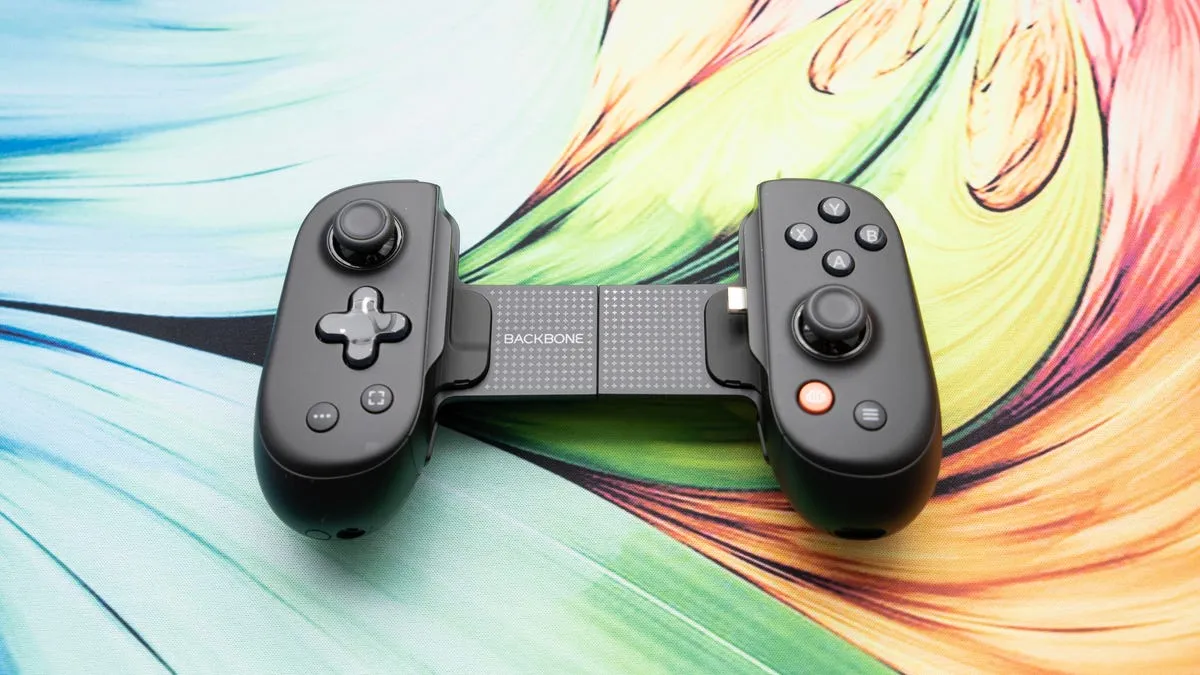
In the realm of mobile gaming, the Backbone Pro aims to be the ultimate game controller that unites various gaming experiences. With a price tag of $170, bolstered by an optional annual subscription of $40 for enhanced features, it attempts to provide a unified gaming solution. My testing centered on the iPhone version of the app, with plans for an Android version on the horizon.
The original Backbone controller, still available, was designed exclusively for phones, eliminating the need for built-in wireless or batteries. In contrast, the Backbone Pro features its own Bluetooth radio and batteries, allowing it to function independently like a traditional Bluetooth controller. Backbone refers to the original controller's functionality as "handheld mode," while the Pro operates in "wireless mode," clearly differentiating the two versions.
Significant redesigns have been made to the Pro, both to support its new capabilities and to enhance its overall feel. Unfortunately, for older iPhone users, the controller only includes USB-C connectors, which means it is compatible only with iPhone 15 or later models. The cornerstone of this new experience lies in Backbone Plus, the subscription service that unlocks additional features.
During a pre-release briefing, Backbone's CEO, Maneet Khaira, outlined his vision for the future of gaming. Khaira emphasized the goal of creating a single device that enables gamers to play across various screens. He envisions a world where even those without a console can enjoy games like Fortnite on any TV available at mainstream retailers. The ambition is to broaden the gaming market by making gaming accessible to a wider audience, encapsulated in the design philosophy of the Backbone Pro.
One notable issue with the original Backbone One controller was its compact design, which often compromised user comfort and feature functionality. With the Pro, Backbone focused on maintaining a manageable size while reintroducing essential design elements that players desire. This includes grips that provide a solid hold, full-size thumbsticks, rear buttons, and Hall Effect triggers.
Backbone has upgraded the ABXY button switches to carbon pill types, resulting in quieter clicks compared to the original controller. While the deeper travel may feel less responsive for button-mashers, it may suit a wider range of gaming styles. In my experience with local games like Carrion and Hades, latency was minimal, though I did notice occasional lag during wireless play on games like Lies of P and Dead Cells.
The Backbone Pro features textured grips for better handling, offering comfort for extended gaming sessions. However, I found the left and right buttons slightly challenging to use due to their size. The rear buttons proved to be more practical for my gaming style, though they require a firm press to avoid accidental activation. Additionally, the triggers provide a deep pull, which enhances aiming but may not be as conducive for rapid firing.
On the left grip, a dedicated Bluetooth pairing button and an analog jack for audio are included, while the right grip features USB-C charging capabilities. This port not only charges the controller but can also trickle charge your phone. Although Backbone rates the battery for 40 hours, my initial experience showed quicker depletion, which later stabilized.
The free Backbone software offers basic functionalities typical of mobile controllers, including button mapping. However, most advanced features are locked behind the $40 annual subscription, which could bring the total cost to $210. A month-long free trial is available to explore the benefits of the Backbone Plus subscription.
Backbone Plus provides a wealth of features, including game streaming support, a unified game launcher, and retro games and emulators. For the Pro version, the software allows for customized game profiles with specific button remappings and trigger settings. The FlowState feature enables easy switching between paired devices, making the transition between screens seamless.
While the Backbone Pro is designed to work as an Xbox controller, it lacks native Bluetooth support for the console. Users must rely on Remote Play or cloud gaming, which can be inconsistent based on network configurations. Although not an issue directly related to Backbone, these limitations could impact the overall experience.
The Backbone Pro is an appealing option for mobile gamers who appreciate the convenience of on-the-go gaming without sacrificing comfort or performance. However, it is essential to consider the investment, as there are numerous alternative controllers available at lower prices. For those who use multiple Bluetooth devices and are willing to pay for a subscription, the Backbone Pro stands out as one of the best choices on the market.